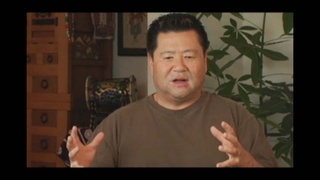Entrevistas
Influencing Japan
The idea of making Taiko, I think, comes out of the fact that, for one, we can’t afford Taiko, but also that—I saw in junior high school and high school going to Manual Arts and Fochet(?)—that people were making their own conga drums. So what’s different? We could make it. I think—I kind of make jokes about it—it has to do with this kind of Yankee ingenuity kind of thing. We have that, too, as Americans. We have this thing, “If there’s a will, there’s a way.” If we want to do it, we can come up with a way to do it.
I don’t think the wine barrel taiko would have ever been invented in Japan, for example, because I think people in Japan are stuck with “Taiko is this.” They have a definition that is set. Well, we have a definition, yeah, but we’re also a lot looser about it. We give ourselves permission to do things.
I think the early masters and players of shakuhachi made their own shakuhachi. But today, most people will go to a maker to get it. Although, I think there’s a slight craft movement in Japan beginning that people can go to stores now and get a blank and learn how to make their own shakuhachi. But I don’t think it’s that popular. But even that, I think it’s almost this thing of it becomes popular in America, so it becomes popular in Japan, like the woodblock print thing. It’s not recognized until it becomes popular outside of Japan. Then Japanese say, “Oh this is far out.”
Fecha: December 10, 2004
Zona: California, US
Entrevista: Art Hansen, Sojin Kim
País: Watase Media Arts Center, Japanese American National Museum





